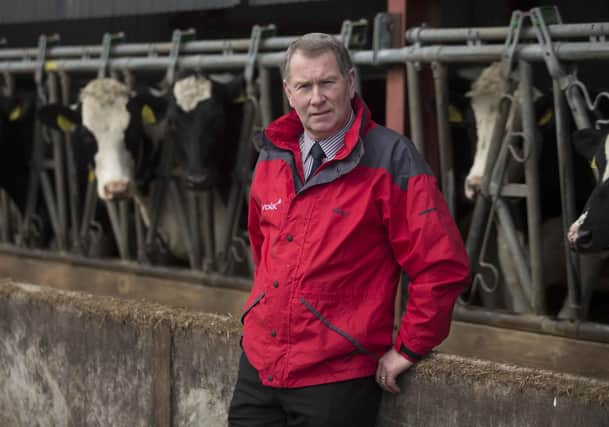Start as you mean to go on


A time when wee calves are not yet ruminating, so less heat is generated through digestion.
That makes young calves highly susceptible to low temperatures – and if they are too cold, growth rates will fall and calves will become more prone to disease.
Advertisement
Advertisement
Beyond exposure to the cold, one of the biggest threats to calf welfare is the hygiene of your calf housing. In fact, AHDB research shows that up to 50% of calves that die do so due to to poor hygiene. Put bluntly - dirty conditions.
The good news is that with some simple steps you can make sure your calves have the warmth, shelter and clean environment they need for a healthy start and productive ever after. Here are the main areas to consider as a farmer with young calves.
REDUCE DRAUGHTS
Standing around in a blowing gale is no fun for anyone. But did you know that a draught of just 5mph can make calves feel from eight to 10 degrees C colder.? So stop that draught by having effective barriers at calf level. Extra straw bales are really useful, but for a long term solution, purpose-built draft excluders are ideal.
VENTILATION AND THE STACK EFFECT
Stopping draughts must never come at the expense of good ventilation in your calf house. Stinking, stale air is about as pleasant for cattle as it is for us humans and a huge disease risk too. Without ventilation the air inside your calf unit can quickly become infiltrated with a dangerous level of pathogens and pollutants that could easily cause pneumonia and other respiratory illnesses. Fresh air ensures you, as well as your calves, can breathe easy.
Advertisement
Advertisement
You can drive natural ventilation in your calf housing thanks to the “stack effect”. This is where warm air rising from your cattle leaves through outlets to create a negative air pressure that draws in fresh air from the outside through inlets.
The efficiency of the stack effect is determined by several factors:
• Area of outlet – roughly 0.04m2 for calves, rising to over 0.1m2 for adult cattle
• Design of outlet – open-ridge designs tend to enhance the stack effect
Advertisement
Advertisement
• Area of inlet – minimum 2x outlet area, ideally 4x outlet
• Pitch of the roof – steeper pitches tend to enhance the stack effect
Note however that young calves housed in large spaces may not generate enough body heat to drive the stack effect. You may need to consider using an extractor fan.
REMOVE EXCESS MOISTURE
Excess moisture and humidity is another thing to guard against. Moisture can quickly reduce the ambient air temperature, leaving your calves working harder to stay warm. Besides which harmful pathogens are much better at surviving in damp, enclosed environments. Repair leaky downpipes and broken water feeders. Avoid leaving areas soaking after cleaning and make sure all pens have good drainage.
EASY ACCESS TO THE WET STUFF
Advertisement
Advertisement
Of course calves still need good access to clean water. They will perform best if fresh drinking water is available from birth – and will typically drink up to two litres per day. Make sure drinkers are easy to access, easy to clean and close to drainage and remember that milk replacer serves as food, not a drink.
FRESH BEDDING – AND PLENTY OF IT
Would you want to sleep on a damp bed when you were already cold? In terms of warmth and disease prevention it is crucial to keep bedding clean and dry. Deep straw bedding is ideal for winter and when used properly will provide a great deal of insulation to reduce the loss of body heat. But remember: much of the insulation value of bedding is lost if it’s wet.
ROOM TO MANOEUVRE
It’s not nice being cooped up. It also risks the development of lameness among your calves. So make sure your calves have plenty of space and try to keep standing time to a minimum. Room to moo, room to move and room to manoeuvre should be the bare minimum.
NEED A LITTLE EXTRA WARMTH?
When Jack Frost is working overtime, you may need to provide additional warmth. In fact, young calves will feel the cold as soon as the temperature dips below 15°C. Calf jackets can be used if your calves require additional warmth. Though make sure they are waterproof, breathable and machine washable. Plastic fasteners are preferable as Velcro traps dirt easily. An alternative to calf jackets is a small heater.
IS THERE ANYTHING YOU COULD DO BETTER?
Advertisement
Advertisement
Given that the lifetime productivity of a cow is so heavily influenced by their health and happiness as a calf, any steps you take to improve the conditions of your calf housing will pay dividends. Take a good long look at your calf housing. What should you improve?
For a practical chat about calf rearing contact Volac NI manager Alistair Sampson, tel; 07860 626442 or browse www.volac,com